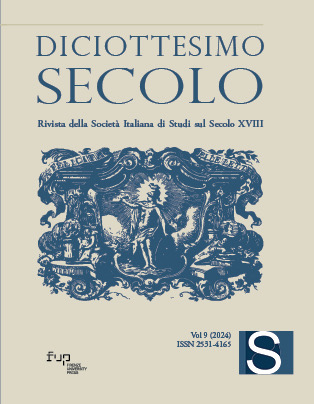Ancient Sources in Adam Smith’s Theories of Sympathetic Morality and Imagination: Aristotle’s Thought and The Theory of Moral Sentiments
Published 2024-10-07
Keywords
- Aristotelian influence,
- Sympathetic morality,
- Adam Smith,
- Imagination,
- Moral philosophy
How to Cite
Copyright (c) 2024 Gianni de Nittis

This work is licensed under a Creative Commons Attribution 4.0 International License.
Abstract
This essay considers the profound influence of Aristotle’s philosophy on Adam Smith’s theories of sympathetic morality and imagination. In particular, it examines how Smith’s theories, often seen as Stoic, align with Aristotelian concepts; also, it analyses Smith’s interpretation of wonder as more than a philosophical catalyst, but also as a force that enhances sensitivity to virtue and informs moral judgement: which is similar to Aristotle’s view of wonder as the genesis of philosophical and scientific inquiry. Consequently, Smith’s understanding of imagination is seen as a transformative cognitive faculty similar to Aristotle’s idea of it as an innate capacity for mental imagery and sensory perception. This juxtaposition underscores the role of the imagination as a creative dynamics that transcends individual perspective and captures the essence of human experience. Smith’s integration of Aristotelian thought represents thus a distinctive and nuanced contribution to the classical legacy within the Scottish Enlightenment, shaping a deeper understanding of moral and philosophical inquiry.

